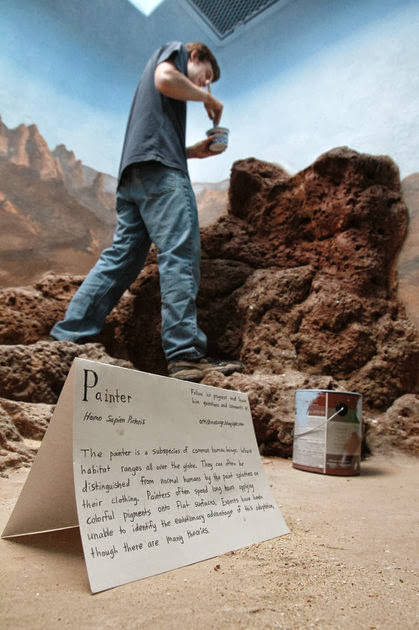Nearly finished with the beaded lizard's mural! I've had a lot of fun with this one, and I am proud of how it's turning out. A few areas still need serious work, and there are other areas that I have probably spent too much time on.
Above is a panoramic photo of all three walls, and below are detail shots from each wall.
I have taken a little artistic license and intensified the colors in some places, but for the most part this is a pretty accurate depiction of certain parts of the Sierra Madre Occidental where the Mexican beaded lizards live. I've been working from photographs. It is such a fantastic landscape with mountains and brightly colored trees and cactus and it is really a pleasure to paint. I hope I can visit there some day.
If you see me in my cage, knock on my glass and give me the thumbs up!




































